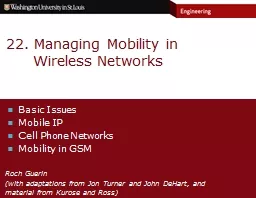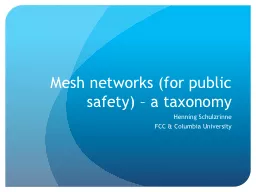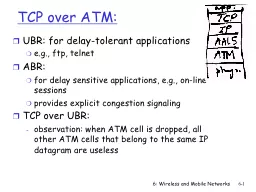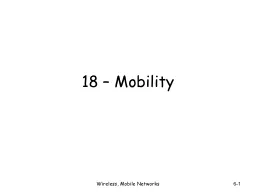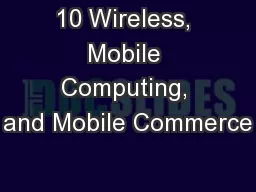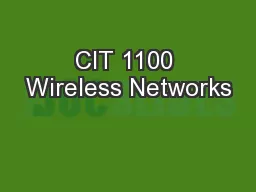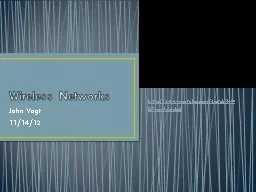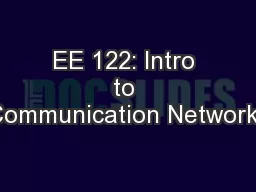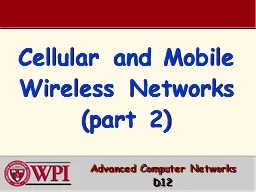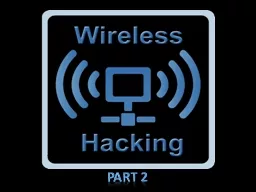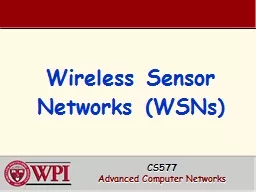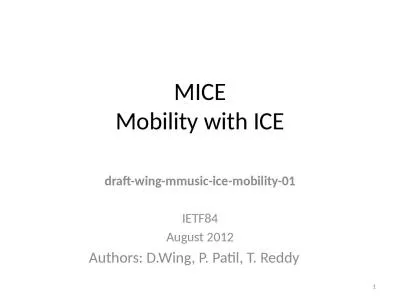PPT-22. Managing Mobility in Wireless Networks
Author : olivia-moreira | Published Date : 2019-01-29
Basic Issues Mobile IP Cell Phone Networks Mobility in GSM Roch Guerin with adaptations from Jon Turner and John DeHart and material from Kurose and Ross Levels
Presentation Embed Code
Download Presentation
Download Presentation The PPT/PDF document "22. Managing Mobility in Wireless Networ..." is the property of its rightful owner. Permission is granted to download and print the materials on this website for personal, non-commercial use only, and to display it on your personal computer provided you do not modify the materials and that you retain all copyright notices contained in the materials. By downloading content from our website, you accept the terms of this agreement.
22. Managing Mobility in Wireless Networks: Transcript
Download Rules Of Document
"22. Managing Mobility in Wireless Networks"The content belongs to its owner. You may download and print it for personal use, without modification, and keep all copyright notices. By downloading, you agree to these terms.
Related Documents

